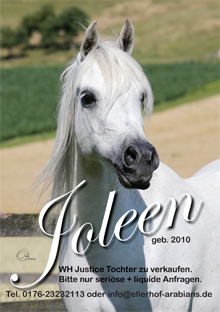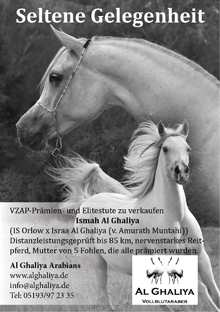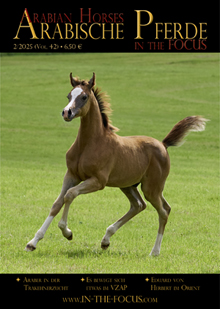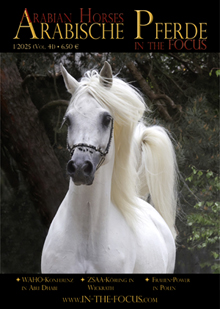Interveiw with Yasser Ghanim
The preservation of the authentic Arabian horse of the Bedouins as an independent population is certainly necessary – one can argue about how to reach this goal. Yasser Ghanim answered questions about why the “Manifesto” is necessary and, among other things, answers the question of why for example the Asil Club and Al Khamsa are not enough.
ITF: Please let me state beforehand, that I am all in favour that you (the Arab people) save what is left of the “original” autochthonous Arabian horse populations, commonly called “Desertbreds”. They definitely have a genetic value due to their genetic diversity, and they are a cultural heritage. What we are discussing here, is HOW this can be achieved. So, what is the aim of the Manifesto?
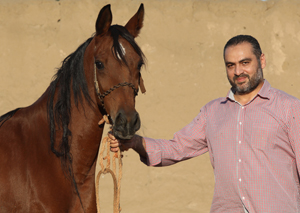
YG: Actually, our initiative is not only about the autochthonous Arabian horse populations. We accept Arabians bred anywhere in the world as long as they adhere to our clear definition.
With regards to the Manifesto, it is about preserving the breed’s authentic identity as it used to be over its extended history up to modern times. Culture is the key determinant in this regard. We see the breed as both, an ecological and cultural product. We think the breed has undergone some big transformations in its identity and characteristics over the past decades. We think that the breed has been largely commercialized and emptied of its core values. The Manifesto discusses the very meaning of what an Arabian horse is and how we can keep it for the future generations.
ITF: How does your view of the Arabian horse differ from that of the WAHO and the current international perception of the breed? Why do you think the Arabian horse, as you see it, is different from what we have today?
YG: It is a complex question. It is not only about WAHO, and it has multiple facets. First, the WAHO definition of the breed is quite administrative. It allowed its member countries at the beginning, who were mostly non-Arab countries, to set their own definitions. These definitions did not always adhere to the Arabic and Bedouin culture’s definitions and criteria such as the absence of hujna, which resulted in a high percentage of horses that include local European ancestors in their pedigrees to be labelled as “purebred Arabians”. Second, the WAHO has no correction mechanism to eliminate known non-Arabian blood. Hujna introduced by crossbreeding to Thoroughbred (TB) lines can now be proven via the means of modern science. Recent genetic studies show up to 62% TB blood in many registered race lines, which raises big questions on whether these horses should continue to be called Arabians. Third, the modern view of the Arabian horse has exaggerated the importance of type and look over the rest of the Arabian horse characteristics. A complete new system developed around isolating the Arabian horse phenotype from its functional, mental, and psychological qualities that developed over history causing big physical and genetic transformations to the breed. In summary, the mainstream breeding scene in the world today is either of the highly contaminated flat racing horses, or the highly dysfunctional show horses which include both asil and non-asil horses.
ITF: So you are trying to preserve the asil horse with its original desert qualities, I can understand that. But are you suggesting that the WAHO horses that do not comply with your definition are not Arabians?
YG: First, I must say that we are not discriminating against any group of horses. There are countless breeds that carry varying degrees of Arabian blood and are great and useful horses for what they are. We are against the bureaucratic ambiguity, the known and proven hujna, the loss of qualities, and last but not least the absence of the cultural framework. We are making one very clear proposition in the Manifesto: The Asil (horse) is not a subset of what WAHO defines as “purebred Arabian”. There is no “non-asil Arabian” for two main reasons:
The rest of this article is only visible to Online Subscribers.
Please log-in, if you are already an Online-Subscriber: Login-PagePlease go to the Shop, if you want to become an Online-Subscriber: Shop-page
The one-year Online Subscription is available at 20 €
-------------------------------------------------------------------------------------------------
Please also read “The Arabian Horse Manifesto (I)”








